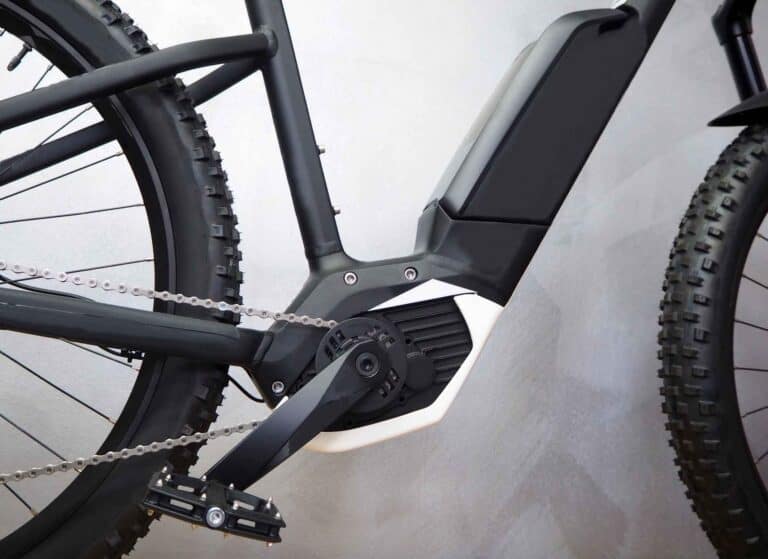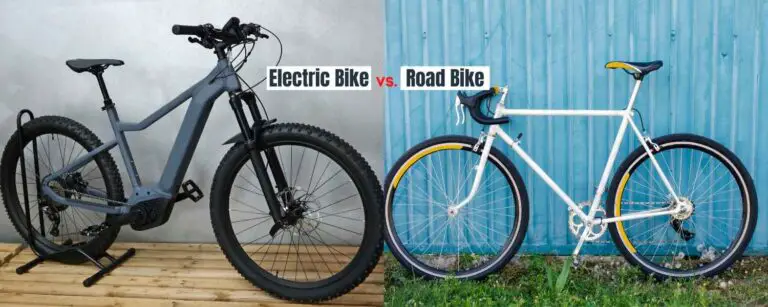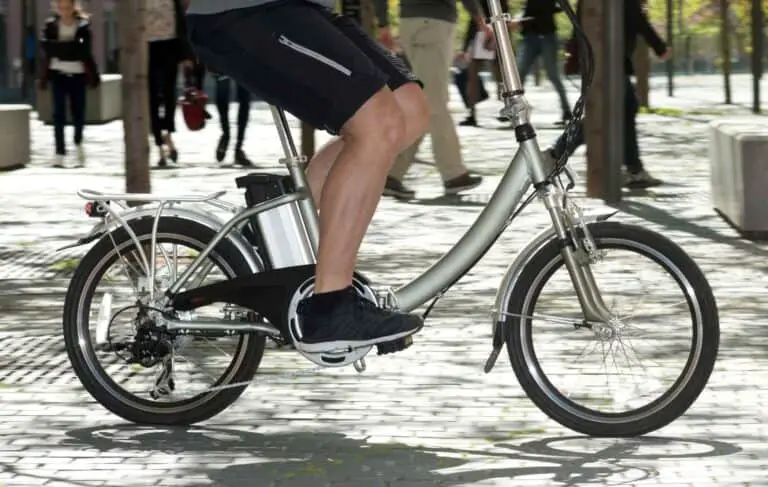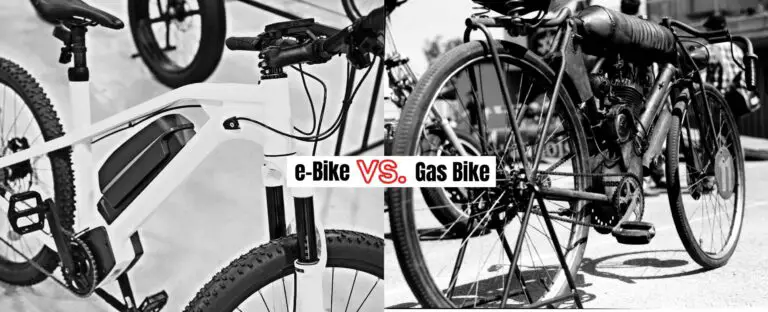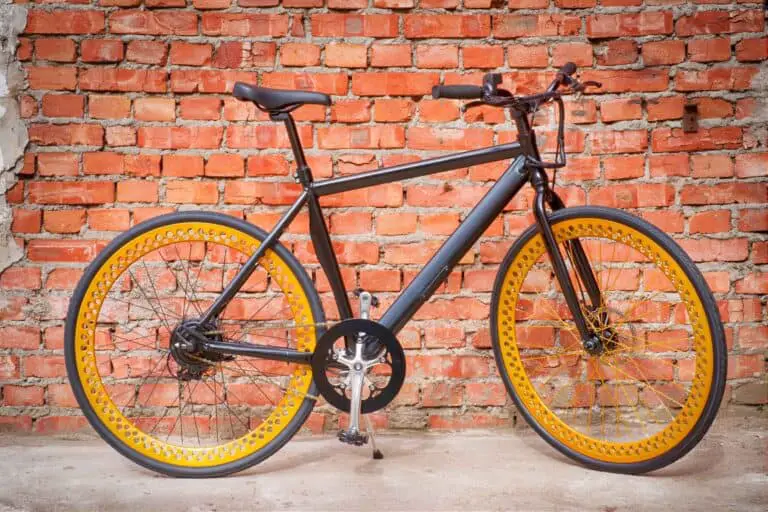How To Waterproof Your eBike (Avoid This Mistake)
I knew I needed to take some extra measures to waterproof my eBike and protect it from frequent water exposure. I have compiled a complete step-by-step guide on how to waterproof your eBike and the answers to some other questions that may pop up as you follow along with these steps.
- Clean Your Electric Bike Before Applying Any Waterproofing Measures
- Dry Your Electric Bike Completely
- Identify the IP Ratings of Your E-Bike and Its Electrical Components
- Choose Between a Sealant or a Cover
- Seal Your Electric Bike’s Motor from Moisture
- Waterproof Your Electric Bike’s Battery
- Protect Your Electric Bike’s Controller from Moisture
- Waterproof Your Electric Bike’s Wires
- Consult Your E-Bike’s Manufacturer’s Website for Any Additional Steps
1. Clean Your Electric Bike Before Applying Any Waterproofing Measures
Before waterproofing any part of your electric bike, it is essential to clean it thoroughly. All waterproofing methods act as a sealant, so if you waterproof your electric bike before cleaning it, you will lock in all the dirt and debris that has collected on your electric bike.
You might be wondering, how do I clean my e-bike before waterproofing it if cleaning requires water? Well, on most electric bikes, the components you will want to waterproof are water-resistant when they arrive from the manufacturer, meaning they can withstand some degree of moisture.
We do not recommend using a high-pressure water system to clean your electric bike when preparing it for waterproofing. Instead, use a damp rag and an appropriate soap on the components you plan to waterproof. That way, you will not inflict any damage to your electric bike components.
2. Dry Your Electric Bike Completely
Once you have finished thoroughly cleaning the components of the electric bike you wish to waterproof, it is imperative you dry them thoroughly. As previously mentioned in the step above, all waterproofing methods act as a sealant. So, if you do not completely dry the components you plan to waterproof, you will be locking bits of moisture inside these components even after the waterproofing process is complete.
It is always a good idea to dry off your eBike after taking it for a ride in wet conditions, even after you waterproof its most crucial components. Over time, a buildup of moisture can cause rust or corrosion, which can significantly alter and decrease the lifespan of your electric bike.
3. Identify the IP Ratings of Your E-Bike and Its Electrical Components
An IP rating, or ingress protection, is the level to which an enclosure protects an electrical system. The rating signifies how effectively an enclosure prevents the electrical system from “ingress” or foreign substances, like water. With IP ratings, the higher, the better.
An IP rating will have two digits, 0-6. The former denotes how effectively the enclosure protects the electrical system against solids. The latter indicates how effectively the enclosure protects against liquids.
Every eBike and its several electrical components will be assigned an IP rating.
Say your electric bike’s motor’s IP number is 54. This tells you that, out of 6, the enclosure protecting your motor effectively blocks out 83% of solid debris, and 67% of liquids. Of course, this means that you will want to waterproof your motor if you frequently plan to ride in a wet climate. Still, you do not have to go to such an extreme as potting to effectively keep moisture out of your motor.
IP ratings help tell the user what level of waterproofing is needed on a particular component. For example, suppose the second digit in the IP rating of an electrical component on your electric bike is a 3 or below. In that case, you may want to consider a more permanent waterproofing method if you will frequently be riding your e-bike in a wet climate. However, if the IP rating is a 4 or above, using one of the less permanent waterproofing measures like a spray sealant should be adequate.
4. Choose Between a Sealant or a Cover
If you decide to waterproof any component of your electric bike, you essentially have two umbrellas of options: a cover or a sealant.
Most electric bike riders who live in wet climates will elect to use a sealant on the components they choose to waterproof. Sealants are more permanent and often more effective than covers. However, some sealants, like sprays, wear off over time.
Electric bike riders who do not live in excessively wet climates but want the ability to ride their eBike in the rain may choose a waterproofing method that acts as more of a cover than a sealant. Electrical tape is an excellent example of a waterproofing method that is considered more of a cover than a sealant.
Electrical tape is not permanent, so it only acts as a temporary barrier between the electrical component and moisture. However, it effectively keeps the occasional, spontaneous downpour from ruining your ride!

5. Seal Your Electric Bike’s Motor from Moisture
If you still wish to seal your electric bike’s motor from coming into contact with moisture, you will first want to identify your motor’s IP rating. Generally, eBike motors are very water-resistant. It is rare to find an eBike motor with an IP rating of less than 4. Using the IP rating as a starting point, you can decide what level of waterproofing you will want to perform on your e-bike’s motor.
In most cases, you will not want to waterproof your electric bike’s motor with something as permanent as potting without getting the opinion of a professional mechanic. This is because, in the future, if your eBike needs any repairs, a mechanic will likely want to disassemble the motor, and most permanent waterproofing solutions prevent disassembly.
We recommend waterproofing your e-bike’s motor by using a sealant/anti-rust and corrosion spray. Waterproofing sprays, like Corrosion X, are temporary, but they provide a high level of protection against moisture.
If you would like a visual guide on how to waterproof your electric bike’s motor with a sealant spray, check out this video:
6. Waterproof Your Electric Bike’s Battery
Like e-bike motors, electric bike batteries are not waterproof, but they are incredibly water-resistant. As a result, you will not have to do any temporary waterproofing to ensure moisture does not damage your electric bike’s battery.
We recommend using a waterproofing spray, like Corrosion X, to waterproof your electric bike’s battery. This spray will seal the small spaces in which water could enter your e-bike’s battery without making any changes to the battery’s integrity.
7. Protect Your Electric Bike’s Controller from Moisture
Some controllers are located inside an electric bike’s frame, so if this is the case for your electric bike, you do not need to do anything to waterproof your controller. However, if the controller on your e-bike is located on the outside of your bike, it is a good idea to waterproof it. Many e-bike users who live in wet climates pay special attention to their e-bike’s controller because it houses most of the electrical components on an e-bike. Therefore, any water damage to the controller’s contents could cause a major malfunction.
We recommend focusing on the sides of your controller, where the two pieces come together with screws or are otherwise affixed. Putting a strip of electrical tape around these edges, or even sealing the screws with silicone is an appropriate way to waterproof your electric bike’s controller.
8. Waterproof Your Electric Bike’s Wires
The wires on your e-bike are inarguably the most critical component(s) to waterproof. If any water enters a damaged wire, a malfunction may be imminent. Therefore, when waterproofing the wires on your e-bike, you will want to focus on two locations:
- The body of the wires
- The plugs and sockets for the wires
Waterproofing the Body of the Wires on Your E-Bike
To waterproof the body of the wires on your e-bike, your best bet will be to bundle them together and waterproof them as one unit. To be clear, the casing the wires come in is waterproof. However, suppose the original casing were to become damaged while you are riding in the rain and water enters the damaged area. In that case, a malfunction could occur before you even notice the damaged wire. Thus, bundling them together and waterproofing them as a unit is the most effective way to protect your e-bike’s wires from water damage.
We recommend using marine-grade, adhesive-lined, heat-shrink wire to waterproof the body of the wires on your electric bike. This will effectively protect your e-bike’s wires from water damage. Some users take this one step further and use an old bike tube to slip overtop the wrapped bundle of wires to double the amount of protection. This is unnecessary, but if it makes you feel better about riding in the rain, go for it!
Waterproofing the Plugs and Sockets for the Wires on Your eBike
You do not want to take any steps to permanently waterproof the plugs and sockets for the wires on your eBike. If your e-bike experiences any kind of malfunction, you will need to be able to access the wires, so do not do anything that could permanently prevent you from unplugging the wires.
We recommend using electrical tape or a waterproofing spray on the plugs or sockets of your e-bike’s wires. Both electrical tape and waterproofing spray are non-conductive, so you do not have to worry about experiencing any kind of reaction when these locations conduct heat while your e-bike is on. We recommend one of these options because they are both temporary waterproofing solutions, yet they are both highly effective.
If you choose to use electrical tape, tape up the area where the wires enter your controller or where they plug into the socket. If you decide to use a waterproofing spray, you can spray directly on the chosen area.
9. Consult Your E-Bike’s Manufacturer’s Website for Any Additional Steps
Every electric bike is different, so before making any permanent changes to your e-bike, we recommend consulting your electric bike’s manual or additional resources provided by your e-bike’s manufacturer. We also recommend seeking a professional electric bike mechanic’s guidance before making any permanent alterations.
Please remember that any permanent alterations you make to your electric bike can potentially void your e-bike’s warranty.
While some e-bikes have detachable batteries, some e-bikes do not. If, for example, your electric bike’s battery does not detach, it is okay to use a more permanent method of waterproofing your battery.
You may not have to complete all these steps, especially if you are only looking to waterproof your motor or if your electric bike’s battery is located within its frame. However, this is our comprehensive list on how to waterproof your e-bike, so by following these steps, your electric bike could be ready to endure those exciting, rainy rides!
“If you don’t ride in the rain, you don’t ride.”
-Ralph Waldo Emerson
How Do I Waterproof My eBike?
In general, you can waterproof your eBike using a spray, tape, dielectric grease, silicone, heat-shrink wire, and a process called potting. Each method differs in cost, on which components of your electric bike it can be used, and if you can do it yourself or if it must be done by a professional.
| Cost | Components on Which It Can Be Used | DIY or Professional Procedure | |
| Waterproofing Spray | Avg. $25 for 16 fl. oz. (Users highly recommend corrosion X) | Battery Controller Motor Phase Wires Sensor Plug/Socket Connectors | DIY or Professional Procedure |
| Silicone Self-Fusing Tape | $12.99 for a 3-foot roll | Motor Phase Wires Connectors | DIY |
| Dielectric Grease | $10.99 for a 4 oz. tube | Battery Controller Connectors Motor Motor Phase Wires | DIY or Professional Procedure |
| Silicone | $7.74 for a 10.1 fl. Oz. bottle | Controller Connectors Wire Ends | DIY |
| Marine-Grade, Adhesive-Lined, Heat-Shrink Wire | $13.99 for 20ct 1ft. ea. | Wires Motor Phase Wires | DIY |
| Potting | $69.99 for 1 gal. of non-flammable resin OR$100+ for professional procedure | Motor | Professional Procedure |
Using Spray to Waterproof Your E-bike’s Components
A waterproofing spray, like the widely beloved Corrosion X, is non-conductive, so it is safe to use on any electrical components. Additionally, a waterproofing spray will lubricate the parts it is applied to, work to rid those parts of rust, and prevent those parts from any further corrosion or rust.
Waterproofing spray is a reliable waterproofing method with many applications, such as marine electronics and aircraft components, so rest assured it will protect your electric bike’s most essential components from water damage. The cost of waterproofing spray is relatively inexpensive, and one application should last anywhere from six months to a year, depending on how often you use your e-bike.
When applying this spray to any surface, you should wear protective gear on your skin. The ingredients in anti-corrosion formulas are highly toxic and should not remain on the skin for an extended period. You can apply this spray yourself or take your e-bike to any mechanic to perform this procedure.
Using Tape to Waterproof Your E-bike’s Components
Silicone self-fusing tape can withstand high temperatures (on average, up to 500 Fahrenheit), so it is safe to use on any of your electric bike’s electrical components. However, you may not want to use it on any parts you need to access often, as you would have to remove and reapply the tape. Silicone self-fusing tape is best used to cover exposed wires or connectors.
Many electricians swear by silicone self-fusing tape, so you do not have to worry about its reliability. While it cannot be used everywhere on your electric bike, it is a very inexpensive method of waterproofing the parts on which it can be applied.
Silicone self-fusing tape is straightforward to use, so there is no need to have this done by a professional. You will be able to tape the necessary components on your e-bike by yourself with ease.
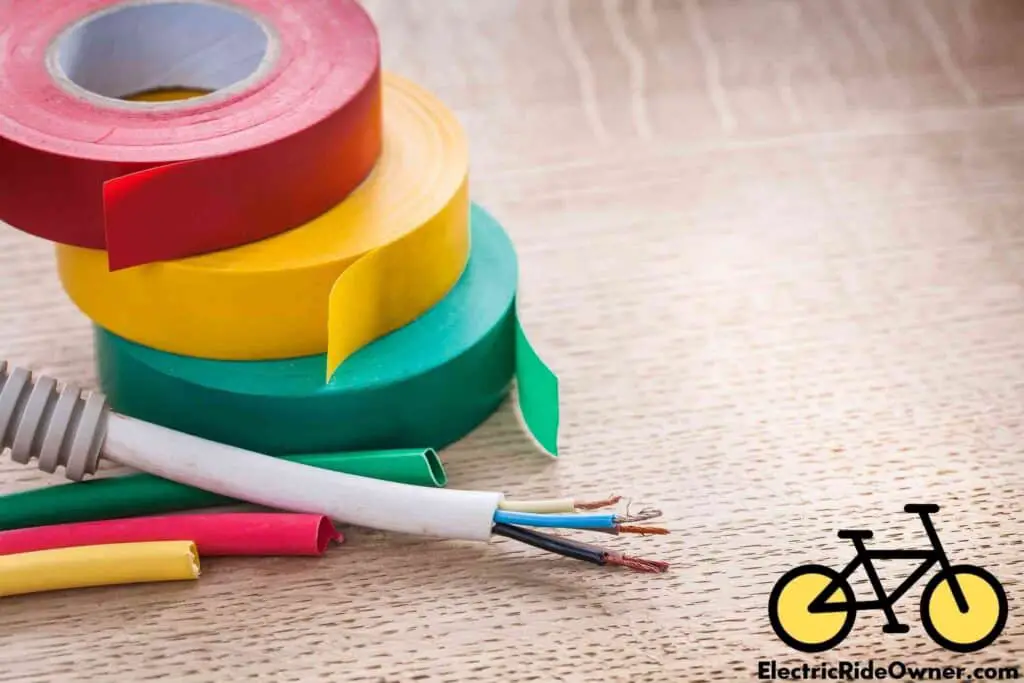
Using Dielectric Grease to Waterproof Your E-Bike’s Components
Dielectric grease is a great, budget-friendly way to waterproof the most crucial components of your eBike. Unlike most other waterproofing methods, dielectric grease can be applied to any component of your electric bike, from the battery to the plug sockets.
Dielectric grease acts as a sealant that prevents corrosion and blocks out moisture, so it is ideal for anyone who plans to ride their electric bike in a wet climate, or for someone storing their electric bike for the winter.
Anyone who tinkers with mechanics knows how many different applications dielectric grease can have–it is a miracle product! It is relatively user-friendly, so you can opt to apply it to your e-bike yourself, or you can have a mechanic apply it to the components of your choosing. We recommend you take it to a mechanic if you have never tinkered with electrical components to ensure the integrity of your electric bike’s most crucial features.
Using Silicone to Waterproof Your E-Bike’s Components
Silicone is an effective way of waterproofing the hard-to-reach places on your electric bike’s most fundamental parts. It is not recommended to use silicone to waterproof components you will need to access, like the battery, because this sealant will seal the surface shut. Silicone is most often used on the connectors or on the screws of the controller where water could seep into the controller because these areas do not need to be accessed.
You can apply silicone to the necessary components of your e-bike yourself in some cases. Furthermore, it is pretty easy since you should not have to take anything apart to apply silicone to the appropriate components.
Using Marine-Grade, Adhesive-Lined, Heat-Shrink Wire to Waterproof Your E-Bike’s Components
Marine-grade, adhesive-lined, heat-shrink wire (phew, that’s a mouthful!) is a permanent way to waterproof and bundle wires. Some electric bike users who elect to waterproof their e-bikes like to bundle all the wires together and secure them on their e-bike’s frame.
E-bike users who often ride on rough terrain in wet climates elect not to use these wraps because they have a higher risk of ripping a wire, thus exposing the internal connections to moisture.
To use these wraps, slide the wires you would like to bundle together into the wrap, apply heat, and watch the adhesive melt as it secures the wires together under the wrap.
Potting to Waterproof Your E-Bike’s Components
Encasing your electric bike’s components in waterproof resin, or the process dubbed “potting”, is the most reliable method of waterproofing. It is also the most irreversible and expensive way to waterproof parts on your e-bike. Unless you are a skilled mechanical hobbyist, it is best to have this process done by a professional.
Potting is typically only an option for electric bikes from high-end, reliable manufacturers with no known recurring issues, as the process makes repairs near impossible.
For more information on what e-bike components, if any, are waterproof, check out this video:
Are eBike Motors Waterproof?
As a general rule, eBike motors are highly water-resistant but not waterproof. As the motor is one of the most instrumental components of an e-bike, manufacturers take extra precautions to ensure they can withstand normal water exposure, like humidity or the occasional puddle.
While eBike motors are generally very water-resistant, they are not waterproof, nor are they built for frequent rides in wet weather. So, if you plan to ride in the rain often, it might be a good idea to take extra waterproofing measures.
The best ways to waterproof a motor are either potting or using dielectric grease. Potting is best if your electric bike is of lower quality and its motor has a liquid IP rating equal to or less than three. Potting is permanent, so once you do this to your motor, you will not be able to reverse this change. However, it is highly effective at keeping your motor safe from water damage.
The other option for waterproofing your motor is using dielectric grease. This method is temporary, as it wears off over time. Suppose you have a high-quality e-bike but know you will often be riding in wet climates. In that case, this waterproofing method is a great way to offer your electric bike a little bit of extra protection from moisture.
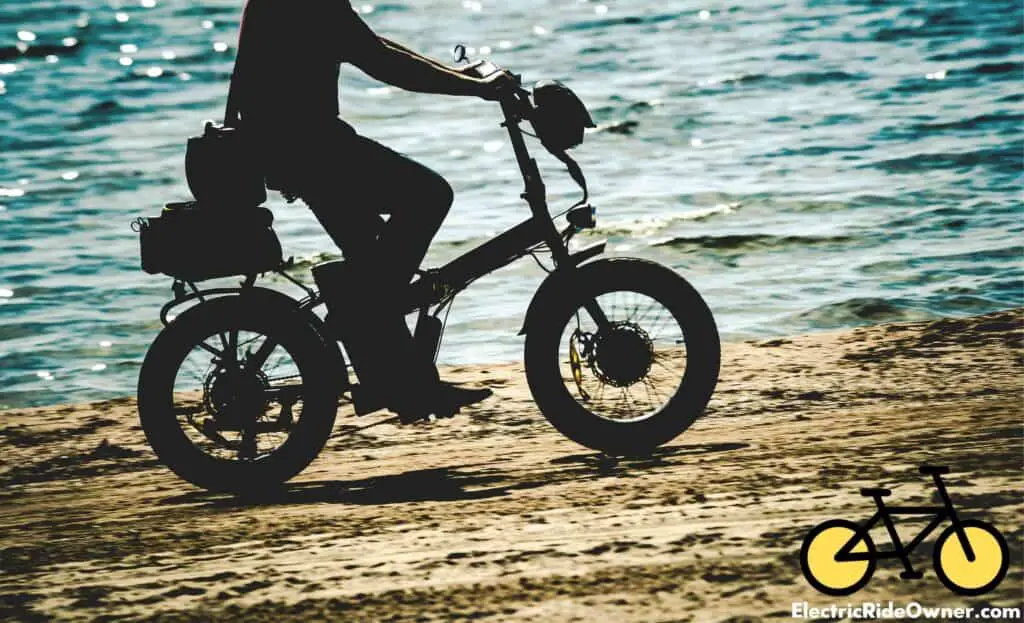
Are eBikes Safe in Rain?
In general, eBikes are safe in the rain. Electric bikes are manufactured to be highly water-resistant, so the occasional ride in the rain will not damage your eBike. If you live in an unusually wet climate, like a coastal city, it might be in your best interest to further waterproof your eBike.
Most electric bikes are built to withstand rides in the rain. So if you get caught in an unexpected storm on your commute or choose to go on the occasional rainy ride, your e-bike should be just fine. However, suppose it rains a lot where you live. In that case, you may want to consider implementing additional waterproofing measures to protect the electrical components of your e-bike, as they are not meant to withstand continual water exposure.
It is not recommended that you leave your electric bike outside, uncovered, in the rain. There are plenty of ways to store your electric bike to ensure it stays in perfect condition. If you are interested in finding the best ways to store your eBike in the rain, check out our article “17 Electric Bike Storage Ideas You Can Actually Use (Home, Garage, Outside).”
Can eBikes Go in Water?
On average, eBikes should not go in the water. Most e-bikes can sustain some water exposure because they are water-resistant or splash-proof. Even so, it is not a good idea to fully submerge your e-bike in water for an extended time, as they are not typically equipped for that level of water exposure.
Electric bikes are safe to get wet, to a certain extent. However, without fully waterproofing your eBike, it is best to limit its exposure to water or wetness–including humidity. A waterproofed e-bike can withstand heavy and consistent rainfall. Still, it will likely not function appropriately after being fully submerged in water. So make sure to store your e-bike away from pools or bodies of water, and consult our article on “17 Electric Bike Storage Ideas You Can Actually Use (Home, Garage, Outside).” for best practices on storing your eBike.
The most critical components of your e-bike, like the battery, motor, or controller, may be waterproofed by the manufacturer with a sealant. In most cases, however, this sealant only protects against minimal water exposure, like rain or a few puddles here and there.
Suppose you do choose to waterproof your electric bike. In that case, it will be able to withstand heavier or more consistent exposure to water. Electric bike riders who live in consistently wet climates, like Oregon or Florida, should heavily consider waterproofing their e-bikes.
Can I Ride My Rad Powerbike in the Rain?
As a whole, you can ride your Rad Powerbike electric bikes in the rain. Rad Powerbike is manufactured to perform better in the rain compared to other e-bikes. Like most electric bikes, Rad eBikes are not meant to be used in extremely wet conditions. In such cases, you should waterproof it.
Rad Powerbike electric bikes are designed to be used in rainy places, like Seattle. They are highly water-resistant, and the electrical components are built to withstand the level of water exposure typical to this region.
However, Rad Powerbike e-bikes are not meant to be submerged in water or ridden in excessively wet conditions, like through bodies of water or large puddles. In these cases, it is in your best interest to take extra waterproofing precautions, like using a waterproofing spray on the controller and motor, each of which houses critical electrical systems. It is unnecessary to apply a more permanent or “heavy-duty” waterproofing measure to this specific brand of e-bike, as they have a high liquid IP rating.
If you think that water may have damaged your eBike, and your electric bike is frequently cutting out, you may want to check out our troubleshooting article Why Does My Electric Bike Cut Out

